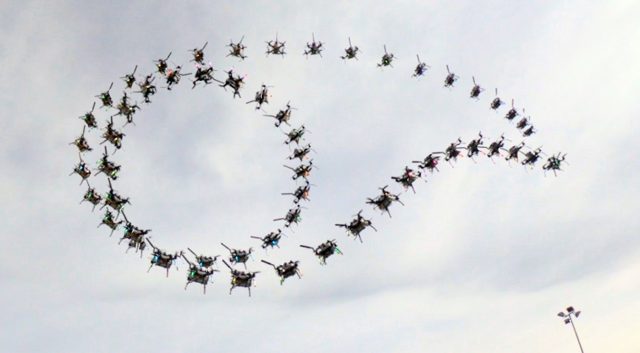
Quadrotor drones are extremely maneuverable flying machines. In the hands of a skilled pilot, they can perform feats of aerial acrobatics not possible with any other aircraft. However, most of us are not skilled pilots. What if there was an AI that could do all that fancy flying for you? Researchers from the University of Zurich and ETH Zurich have created just such a system, which operates entirely on-board the aircraft and has never crashed—at least in real life.
Similar piloting AI systems for quadrotor aircraft are either much less maneuverable or relied on external systems like cameras and motion tracking. The custom 3.3-pound (1.5 kilograms) drone has an impressive 4:1 thrust ratio, and the on-board environmental processing happens on an Nvidia Jetson TX2 board. To see the world around it, the quadrotor has an Intel RealSense T265 dual fisheye camera.
The team, known collectively as the Robotics and Perception Group, also trained this autonomous system in a unique way. Training a neural network to do something challenging like piloting a drone usually requires a great deal of real-world testing. So, you would run simulations until the network could pull off the desired maneuver, and then test it with the real thing. Early real-world tests often lead to catastrophic failure as the program attempts to apply simulated learning to real life. In this case, the Robotics and Perception Group went straight from a simulation to a fully functional real-world demo.
They accomplished this by using a pair of “controllers” in the simulation: an expert and a student, both operating inside a Gazebo environment modified for quadrotor physics. The expert controller had exact data, and the student controller only received abstracted data. Over time, the expert helps the student learn maneuvers without this “privileged” data. That has the effect of making the network better at piloting in real life, which is much less predictable than a simulation.
The system learned to do three complicated maneuvers, including a Power Loop, a Barrel Roll, and a Matty Flip. All the tricks include up to three Gs and very precise control of the aircraft. You can see them diagrammed above, along with a routine that includes all three. The AI is flexible enough to string together any combination of the learned maneuvers. The researchers say it took just a few hours of simulated training before the neural network was able to perform these maneuvers in real life without crashing. Honestly, that’s more than most human pilots could ever hope to do.
Now read:
- Review: Flying DJI’s New Mavic Mini Portable Drone
- FAA: Weaponized Drones Are Illegal
- The DroneBullet Is Built to Seek and Destroy Other Drones



